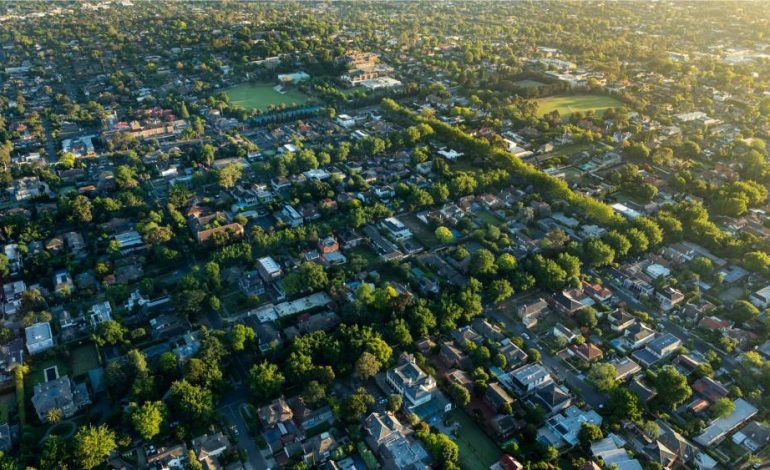Urban areas are often seen as concrete jungles, where buildings and infrastructure dominate the landscape. However, cities are also home to a surprising amount of biodiversity, supported by green spaces like parks, gardens, and urban forests. These green spaces are vital to maintaining ecological balance within cities, offering habitat for wildlife, improving air quality, and enhancing the quality of life for urban residents. As cities continue to expand, the importance of preserving and creating green spaces to support urban ecology and biodiversity becomes increasingly crucial.
The Role of Green Spaces in Urban Ecology
Green spaces in cities serve as critical refuges for biodiversity. They provide habitat for various species, from birds and insects to small mammals and plants. Urban parks, green roofs, and community gardens create a mosaic of habitats that support different life forms, allowing for greater species richness in areas typically dominated by human activity. These green spaces are often the only places where certain species can thrive within an urban environment, making them essential for the conservation of urban biodiversity.
Moreover, green spaces play a significant role in ecological processes such as pollination, seed dispersal, and nutrient cycling. These areas act as stepping stones for wildlife, connecting different parts of the city and allowing species to move and interact. By maintaining a network of green spaces, cities can support more resilient ecosystems that are better equipped to withstand environmental changes and pressures.
In addition to supporting wildlife, urban green spaces also provide numerous benefits to human residents. They offer places for recreation and relaxation, improve mental health, and contribute to the overall well-being of city dwellers. By promoting urban ecology through green spaces, cities can create healthier and more sustainable living environments for both people and wildlife.
Biodiversity in Urban Areas
Biodiversity in cities is often underestimated, yet it plays a critical role in urban ecosystems. Urban environments, though heavily modified by human activity, can still host a surprising diversity of species. The presence of varied habitats within cities, such as parks, gardens, water bodies, and even vacant lots, allows different species to coexist in close proximity to human populations.
Urban biodiversity includes not only native species but also non-native species that have adapted to city life. These species often fill ecological niches created by urbanization, contributing to the overall diversity of the area. For example, certain bird species, insects, and plants thrive in urban environments where they find food, shelter, and breeding sites. This mix of native and non-native species creates unique urban ecosystems that are dynamic and ever-changing.
The importance of maintaining biodiversity in cities extends beyond ecological benefits. Diverse ecosystems are more resilient to disturbances, such as climate change and pollution. They also provide ecosystem services that benefit urban residents, including air purification, temperature regulation, and stormwater management. By preserving and enhancing biodiversity in urban areas, cities can build more resilient and sustainable environments.

Challenges to Urban Biodiversity
Despite the benefits, urban biodiversity faces several challenges. Urbanization often leads to habitat loss and fragmentation, making it difficult for species to survive and thrive. As cities expand, natural areas are converted into buildings and roads, reducing the availability of green spaces. This loss of habitat can lead to a decline in species diversity and disrupt ecological processes.
Pollution is another significant challenge to urban biodiversity. Air, water, and soil pollution can have detrimental effects on wildlife and plant life. For instance, air pollution from vehicles and industrial activities can harm plants and reduce their ability to photosynthesize, while contaminated water sources can affect aquatic species and the overall health of urban ecosystems.
Invasive species also pose a threat to urban biodiversity. These species, often introduced by human activity, can outcompete native species for resources, leading to a decline in native biodiversity. Managing invasive species is crucial for maintaining the balance of urban ecosystems and supporting the diversity of native species.
To address these challenges, cities need to implement strategies that prioritize the protection and enhancement of urban biodiversity. This includes creating and maintaining green spaces, restoring natural habitats, and implementing policies that reduce pollution and manage invasive species. By taking proactive steps, cities can overcome these challenges and create environments where both people and wildlife can thrive.
The Future of Urban Ecology
The future of urban ecology depends on the actions we take today to preserve and enhance green spaces and biodiversity in cities. As urban populations continue to grow, the demand for land and resources will increase, putting additional pressure on urban ecosystems. However, with thoughtful planning and sustainable practices, cities can balance development with the need to protect and restore natural environments.
Innovative approaches such as green infrastructure, which integrates natural systems into urban design, can help cities support biodiversity while providing essential services like flood control and air purification. Green roofs, urban forests, and community gardens are examples of how cities can incorporate nature into their landscapes, creating spaces that benefit both people and wildlife.
Public awareness and community involvement are also key to the success of urban ecology initiatives. By engaging residents in the creation and maintenance of green spaces, cities can foster a sense of stewardship and responsibility for the urban environment. Websites dedicated to urban ecology and sustainable living offer valuable resources and information to help communities get involved in these efforts.
Conclusion
Urban ecology is vital for creating cities that are not only livable for humans but also hospitable to wildlife. Green spaces and biodiversity are essential components of a healthy urban environment, providing ecological, social, and economic benefits. As cities continue to grow, it is crucial to prioritize the preservation and enhancement of green spaces to support biodiversity and ensure the sustainability of urban ecosystems. By embracing urban ecology, we can create cities that are vibrant, resilient, and in harmony with nature.









